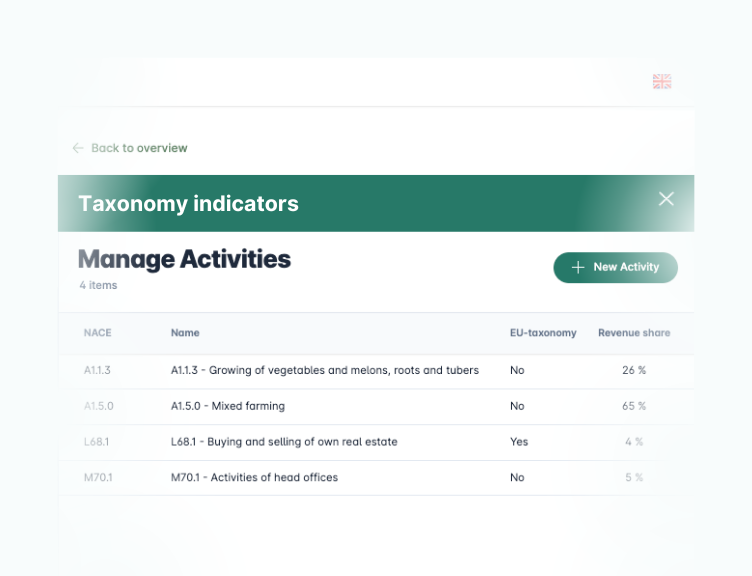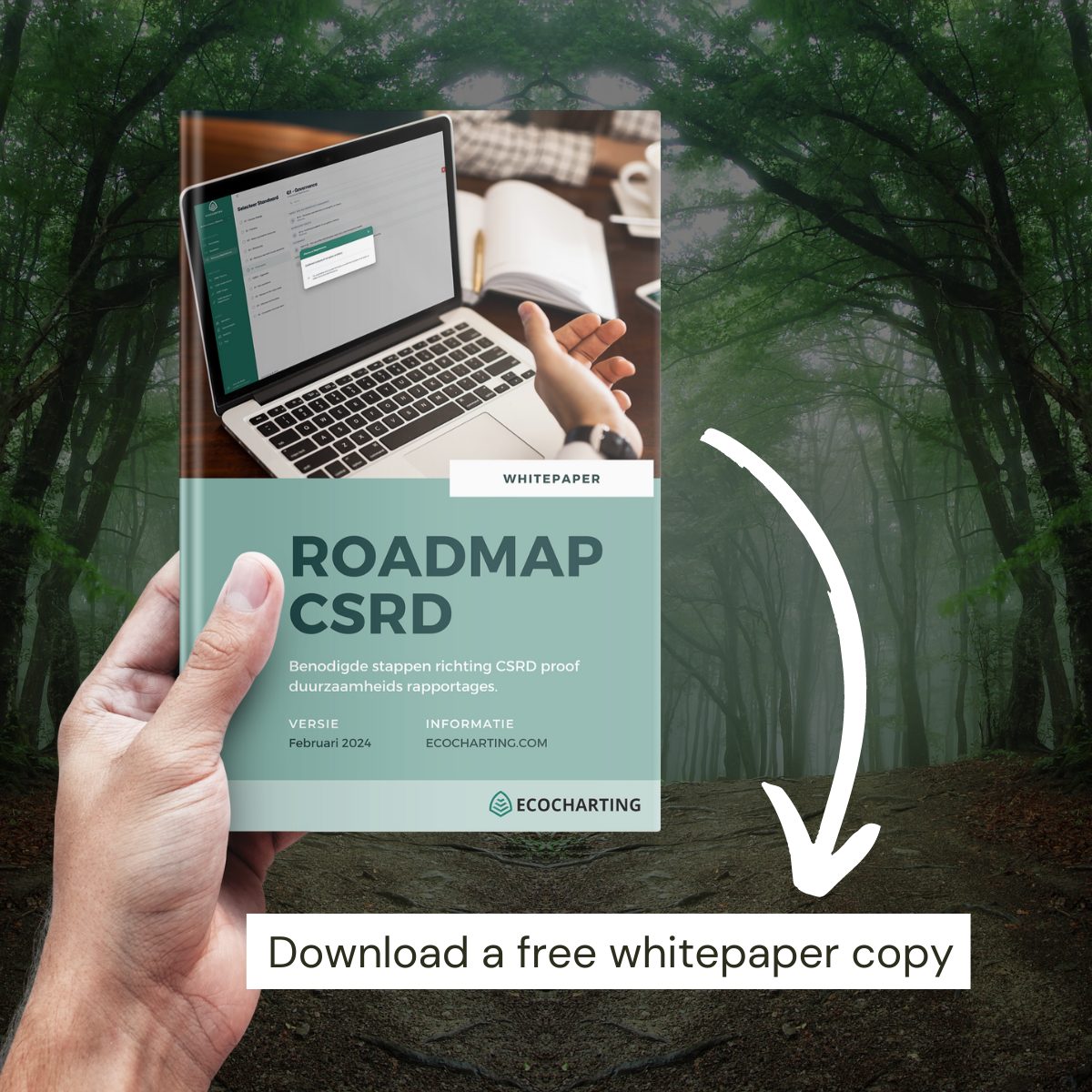EU Taxonomy - all you need to know
As part of your CSRD, you are required to report on EU Taxonomy KPIs. This entails defining to what extent your business activities and investments are ‘green’ as defined by the EU. Calculating these metrics and disclosing related narratives is part of the intuitive CSRD Platform by Ecocharting.

Trusted by LEADING EUROPEAN companies










EU Taxonomy - this is what you need to know
To enable financial parties to get more transparency on the sustainability of their investments, the EU has developed a method for determining to what extent business activities are green. In case you are required to report according to CSRD, you should calculate EU Taxonomy metrics to disclose this information following the right guidelines.
The first step is to identify which of your business activities are labeled by the EU as ‘possibly green’ – these are the so-called eligible activities. You then want to know how much revenue and investments are related to these activities within your business.
The fact that these activities are eligible, does not mean that they are definitely sustainable as defined by the EU taxonomy. To calculate the final share, you need to identify to what extent your activities are ‘aligned’ with all criteria as set by the taxonomy. This means that you need to identify whether you do not harm the environment, and whether you really have a positive contribution to one of 6 environmental goals, such as mitigating climate change.

Get a demo account
Get a demo account to gain direct access to the Ecocharting CSRD platform. Explore its comprehensive functionalities:
- Double materiality assessment
- GAP analysis
- CSRD Policies, actions & targets
- Reporting & publishing
In practice
How to get started with EU Taxonomy

The ESRS guidelines are quite clear of what should be described in your CSRD policies. To turn this into practice, however, can be a big challenge still. That’s why we have developed a pragmatic approach in collaboration with experts & accountants.
Based on the findings in your double materiality assessments, your CSRD policies, actions and targets can be automatically determined. This means that you will be able to save significant time in preparing for CSRD.
Taxonomy Goals
KPIs per Goal
Easy steps to get prepared

CSRD & Ecocharting
Join our next webinar to learn about CSRD and how Ecocharting can help you in your journey towards sustainability.
- Roadmap CSRD & the fit with Ecocharting
- Ecocharting software: setup, costs, timeline
- Double materiality & GAP analysis in practice
- F.A.Q. and Q&A
Ecocharting Software
Get started and calculate EU Taxonomy KPI's
In our software, you are helped in preparing the right EU Taxonomy metrics in a very intuitive way. This follows an easy to grasp process consisting of some simple steps.
Identify eligible activities
Identify whether your activities are ‘possibly’ green by looking up your business activity NACE codes.
Determine the alignment of activities
Make sure your activities have a positive contribution to the goal and identify that you do not harm any environmental theme.
Calculate & Disclose metrics
Per goal, you need to calculate three main metrics. These KPI’s include the revenue share, CapEx investments and OpEx investments.

Roadmap CSRD
Our most up-to-date whitepaper. Discover a complete overview of the regulations and the steps to be taken:
- How to engage with whom and when?
- Which datapoints belong in the report?
- How to determine materiality?
- What is the role of digitisation and automation?
Start CSRD preparations today using Ecocharting.
Get access to our comprehensive CSRD platform by creating your personal demo account today.



